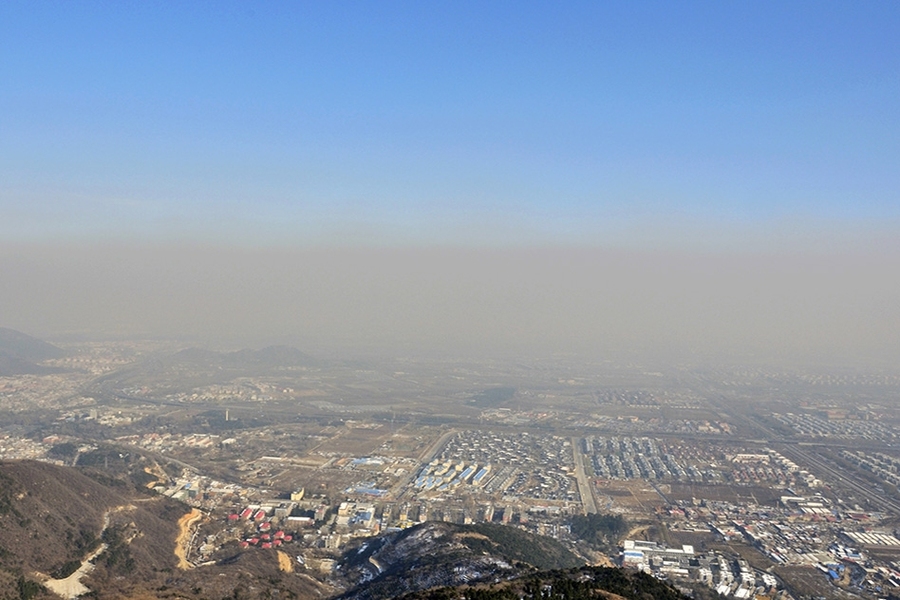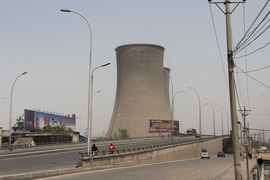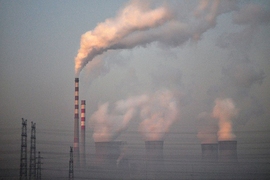Improved air quality can be a major bonus of climate mitigation policies aimed at reducing greenhouse gas emissions. By cutting air pollution levels in the country where emissions are produced, such policies can avoid significant numbers of premature deaths. But other nations downwind from the host country may also benefit.
A new MIT study in the journal Environmental Research Letters shows that if the world’s top emitter of greenhouse gas emissions, China, fulfills its climate pledge to peak carbon dioxide emissions in 2030, the positive effects would extend all the way to the United States, where improved air quality would result in nearly 2,000 fewer premature deaths.
The study estimates China’s climate policy air quality and health co-benefits resulting from reduced atmospheric concentrations of ozone, as well as co-benefits from reduced ozone and particulate air pollution (PM2.5) in three downwind and populous countries: South Korea, Japan, and the United States. As ozone and PM2.5 give a well-rounded picture of air quality and can be transported over long distances, accounting for both pollutants enables a more accurate projection of associated health co-benefits in the country of origin and those downwind.
Using a modeling framework that couples an energy-economic model with an atmospheric chemistry model, and assuming a climate policy consistent with China’s pledge to peak CO2 emissions in 2030, the researchers found that atmospheric ozone concentrations in China would fall by 1.6 parts per billion in 2030 compared to a no-policy scenario, and thus avoid 54,300 premature deaths — nearly 60 percent of those resulting from PM2.5. Total avoided premature deaths in South Korea and Japan are 1,200 and 3,500, respectively, primarily due to PM2.5; for the U.S. total, 1,900 premature deaths, ozone is the main contributor, due to its longer lifetime in the atmosphere.
Total avoided deaths in these countries amount to about 4 percent of those in China. The researchers also found that a more stringent climate policy would lead to even more avoided premature deaths in the three downwind countries, as well as in China.
The study breaks new ground in showing that co-benefits of climate policy from reducing ozone-related premature deaths in China are comparable to those from PM2.5, and that co-benefits from reduced ozone and PM2.5 levels are not insignificant beyond China’s borders.
“The results show that climate policy in China can influence air quality even as far away as the U.S.,” says Noelle Eckley Selin, an associate professor in MIT’s Institute for Data, Systems, and Society and Department of Earth, Atmospheric and Planetary Sciences (EAPS), who co-led the study. “This shows that policy action on climate is indeed in everyone’s interest, in the near term as well as in the longer term.”
The other co-leader of the study is Valerie Karplus, the assistant professor of global economics and management in MIT’s Sloan School of Management. Both co-leaders are faculty affiliates of the MIT Joint Program on the Science and Policy of Global Change. Their co-authors include former EAPS graduate student and lead author Mingwei Li, former Joint Program research scientist Da Zhang, and former MIT postdoc Chiao-Ting Li.









